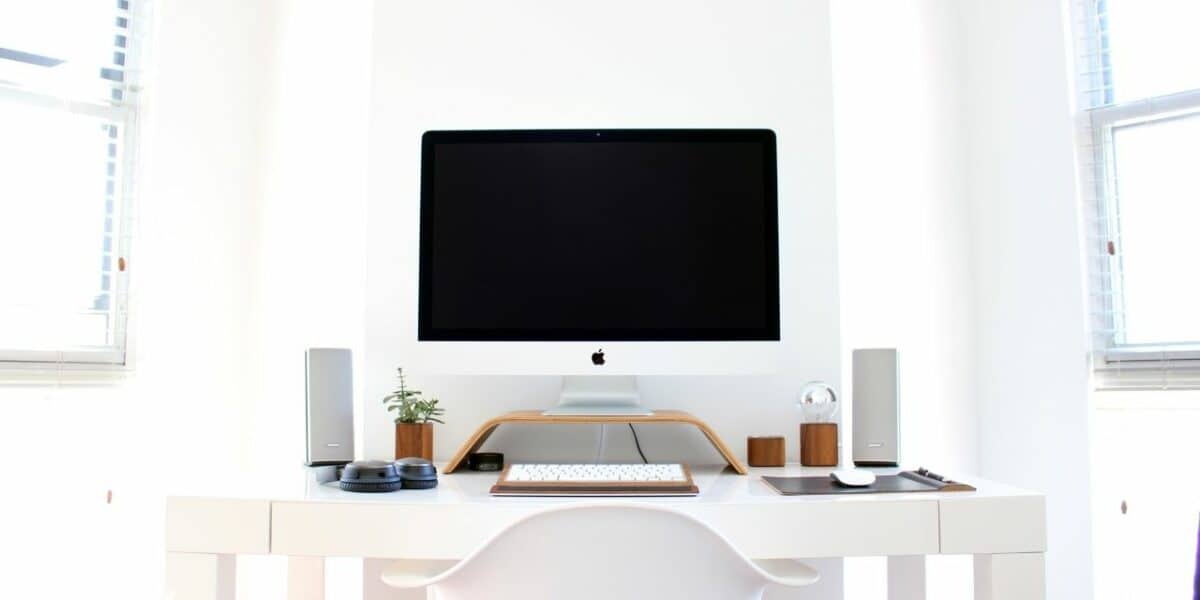Working from home has become the norm for many organizations, but we’re fast learning the benefits of optimizing a remote workspace setup to individuals’ happiness and performance. Newbie home workers were quick to jump on the pyjama bottoms train, but admit that productivity can take a hit when good methodologies aren’t in place.
Enjoying your remote work setup can be as fun as it is good for productivity. In fact, WFH research from the time-tracking app RescueTime has found that:
- Over a year, remote workers average 58 more hours on their core work tasks and 256 fewer hours on communication than workers in office environments
- Remote workers save 2–5.5 hours a day without commuting and in-person meetings.
Let’s dive into some things team members can do to really optimize their individual remote workspace.
If you’re a leader looking to find out what companies can do to enhance their staff’s WFH experience we’ve got a guide for that too.
Commit to a Dedicated Remote Workspace
Without an external office to go to, it’s important to create an equivalent work environment of your own. If you have a suitable room at home you are in luck; otherwise, find a corner, table, or desk location that can become your setup for every working day.
Ideally, this is a setting that you won’t use for any other purpose than getting your work done. Where a home office is unavailable, a single desk can do the trick.
Designer Noz Nozawa puts it perfectly: her desk “puts me in the zone of ‘when I’m here, I’m working,’ it helps me not get distracted by the kitchen and lets me mentally separate after the workday is done.” If you’re really stuck for space and a dining table is all you have, stay tuned: the rest of these tips will really help.
Dress for Work
AKA, no pajamas. Instead, continue to wear the same outfits you would wear when in a public work environment for your industry. It taps into a principle that’s been researched already: “enclothed cognition” was described as “the systematic influence that clothes have on the wearer’s psychological processes” in a 2012 paper in the Journal of Experimental Social Psychology.
In simpler terms, it has been proven that the clothes we wear can affect us mentally, an idea that is easy to harness. Work clothes make our minds believe that we are in “work mode”, vital if you are missing most of the usual cues that signal your workday is in progress. This can really benefit in optimizing a remote workspace.

Find A Supportive Seat
There’s evidence out there that says that most of us sit too much, but there are some great ergonomic chairs that recognize this and offer your back more support. As a baseline, chairs that allow you to adjust their height, their back position, and the angle of tilt are recommended, and there are plenty of more detailed guides out there on how to find the right ergonomic chair for you. This is one of the most key principles in optimizing a remote workspace.
If you’re working with the chair you have, you’ve got two options:
- Adjust the height of your keyboard and monitor to compensate for a chair that can’t be adjusted
- Ask your company if they have a budget for remote employees who now need home office essentials.
When adjusting your keyboard and monitor, ensure that the monitor is at your eye level and that your keyboard is comfortably in line with your wrists.
Keep Your Working Environment Clean And Fresh
A messy workspace, and messy home surroundings, can add to the natural distractions that might bother you while you work from home. Offset any chaos you might feel while working out of the office by keeping your desk, or “desk area”, clear from clutter. Tidy up any stray items at the end of your working day so that every morning you have a fresh space. Add to this by wiping down your surfaces and screens on a daily basis.
You can also use fragrances to keep your space refreshed, by adding in scented candles or diffusers that you enjoy. Citrus scents have the added benefit of feeling reviving, great for an afternoon slump.

Build In Practices That Mimic Your Typical Workspace
Beyond the practicalities of your WFH setup, there are other key steps that will mimic a normal work environment. These will build on what you’ve adjusted in your physical space, to support a workday that will feel more like what you’re used to.
- Decide on a routine that works for you
- Take breaks and schedule social time for calls with colleagues or chats at home
- Communicate your needs to anyone else at home
- Track your time
Be Your Most Efficient Self
Take on these tips to make working from home work for you. The key takeways from this article are below.
Takeaways
- Remote working can actually enhance productivity, as long as good practices are in place
- Create a dedicated workspace that you use exclusively when on the clock
- Dress for work to add to a professional home environment
- Select a supportive seat or adapt what you have
- Clean and refresh your workspace at the end of your working day
- Add to your WFH experience by sticking to a routine, taking breaks, setting boundaries, and tracking your time
Enjoyed these productivity tips? We also recommend reading:


Utilizing fixtures that can keep yourself productive and comfortable at the same time sounds like the most important tip to take into account. This way, you don’t feel too at home or too separated from the place you live at the same time while working efficiently. I’ll focus on these aspects when I shop for office furniture to use at home.